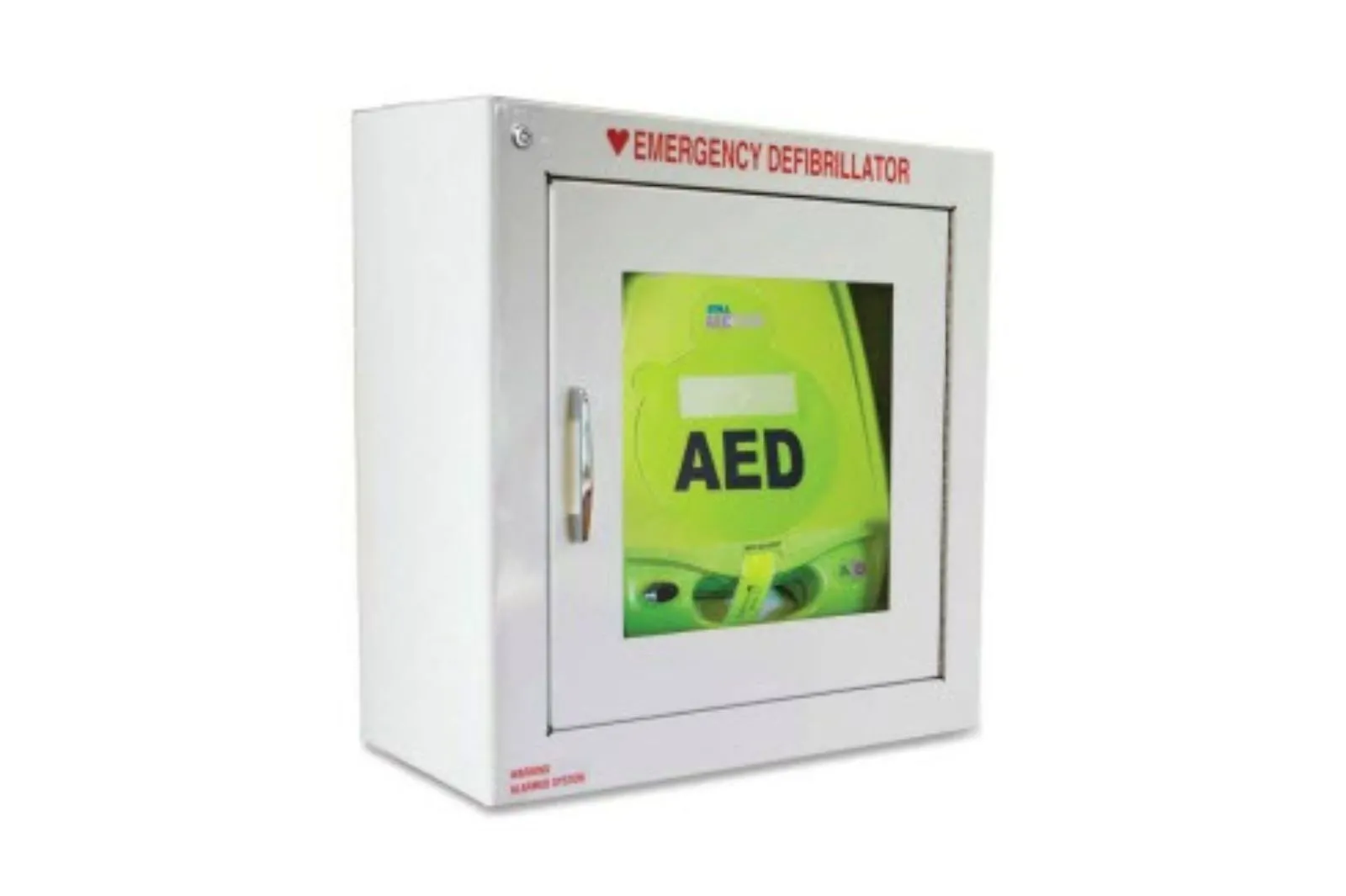
Automated External Defibrillator (AED)
Location of AEDs

- Academic Office Building - 3rd Floor - near 303
- Alpine Field - field offices
- Campus Services Building - 1st Floor - across from the stockroom
- Centennial Hall - 1st Floor - near 113
- Columbine Hall - 2nd Floor - near 231
- Cragmor Hall - 1st Floor - near 101
- Dwire Hall - 2nd Floor - near 204
- Engineering - 1st Floor - near 132
- ENT Center for the Arts - 1st Floor - near restrooms by Dusty Loo
- Gallogy Event Center - 1st Floor - near visitor's locker room
- Hybl - Centura clinics
- Hybl - 2nd floor - near the cafe
- Hybl - 3rd floor -near 302
- Hybl - Room 334
- Hybl - 4th floor - near 441
- Kraemer Family Library - 2nd Floor - near west doors
- Lane Center - 1st Floor - near elevator
- Lane Center - 2nd Floor - near bathroom
- Lane Center - 3rd Floor - near bathroom
- Lane Center - 4th Floor - near bathroom
- La Plata - 1st Floor - front desk
- Main Hall - 3rd Floor - near elevator
- Monarch - 1st Floor - near elevator
- Mountain Lion Field House - Indoor Practice Facility
- Osborne Center - 2nd Floor
- Recreation Center - 1st Floor front desk
- Recreation Center - pool area
- Recreation Center - 2nd floor by 212
- Recreation Center - 2nd Floor across from elevator
- Roaring Forks - 1st Floor -near elevator
- University Center - 1st Floor - near front desk
- University Center - 2nd Floor - near back hallway stairs
- University Hall - 1st Floor - near 117
- Wellness Center - 1st floor H125
Resources
Sudden cardiac arrest (SCA) is a medical event in which the heart’s rhythm becomes erratic, and the heart can’t pump oxygenated blood to the brain or other vital organs. Unless a normal heart rhythm is restored within a short time, death is virtually inevitable. An Automated External Defibrillator (AED) is a compact and portable, battery-operated device used to automatically deliver measured electrical shocks in order to reestablish the heart’s normal rhythm. The simple operation of AEDs makes them suitable for public places, to be used by those who have basic Cardio-Pulmonary Resuscitation (CPR) and AED training. The AED circuitry is designed to analyze cardiac rhythm and inform the operator whether a shock is indicated. Electrode pads on the victim transmit information to the device for both monitoring and shock therapy. Once activated, AEDs have voice and text which will guide the user through a few simple steps. The AED will NOT electrically shock the victim unless the unit’s pre-programmed computer indicates that a shock is necessary—at which time, a “voice prompt” will warn bystanders to not touch the patient during the shock phase.
When Sudden Cardiac Arrest occurs, several key contributors to survival must be initiated in rapid order. Those key factors are known as the “Chain of Survival:”
- Early Recognition
- Early CPR
- Early Defibrillation
- Early Access to EMS (Emergency Medical Services)
Early bystander cardiopulmonary resuscitation (CPR) and rapid defibrillation are two major contributors to survival of adult victims of sudden cardiac arrest, however these must be combined with other elements such as recognition that a person is having a medical emergency and early access to local Emergency Medical Services, hopefully with Paramedic services. According to the AHA, "Use of AEDs by first responders and laypersons has reduced time to defibrillation and improved survival from sudden cardiac arrest in several communities.”